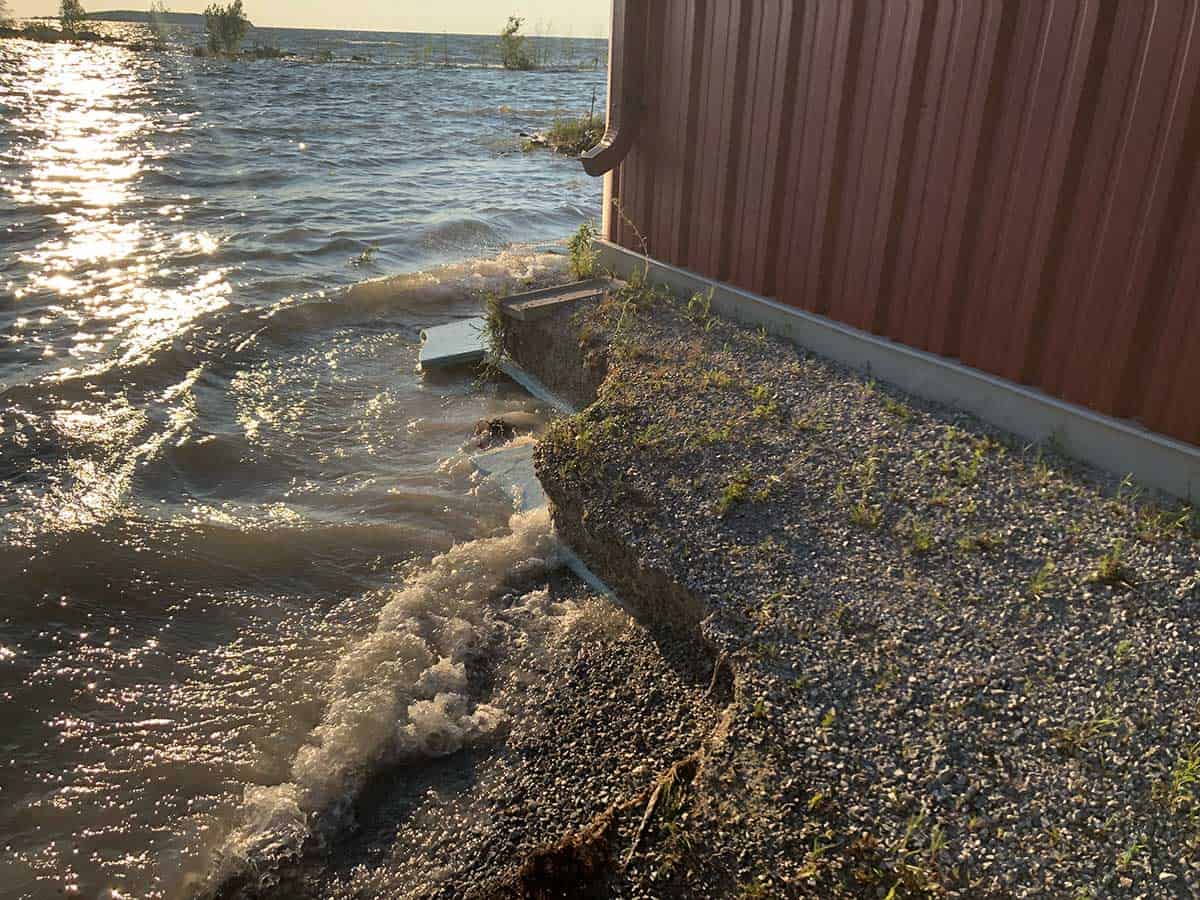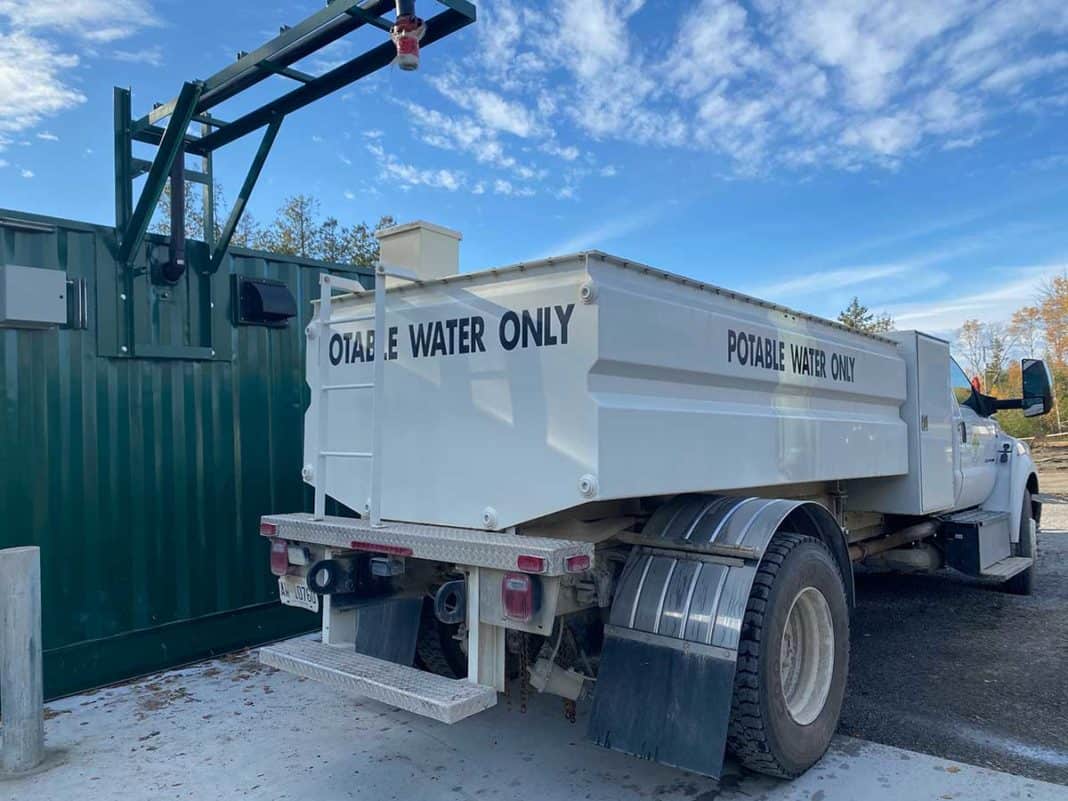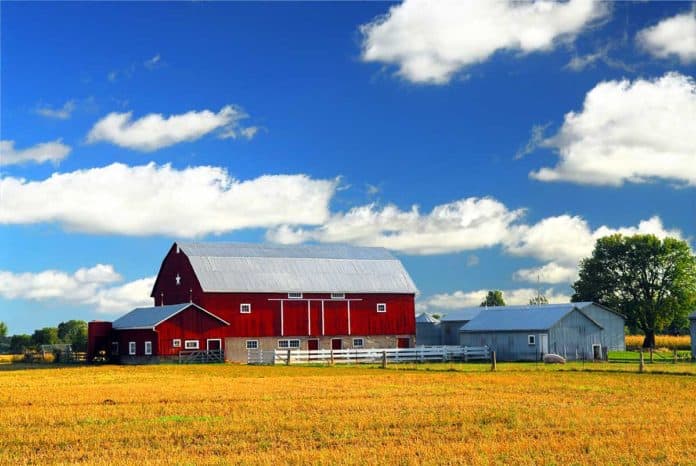ZHIIBAAHAASING – This past Thursday, March 18, a quartet of cabinet ministers in the Canadian and Ontarian governments joined with First Nation chiefs, councillors and band managers to announce a multi-million-dollar investment into ending boil water advisories in Ontario First Nations, including in the press conference’s host community of Zhiibaahaasing, whose citizens have had to boil their drinking water for three decades since the community’s rebirth in 1991.
“I’m ecstatic. I’m so happy; I was choking up when I was trying to speak there yesterday,” said Zhiibaahaasing Ogimaa-kwe Irene Kells. “It’s a good feeling to know that we’re finally going to get pipe water and safe drinking water, not the way we’ve been living in the past years here in the community. The safety of our people comes first.”
Zhiibaahaasing hosted Thursday’s joint announcement between the three levels of government. In that community, Canada will provide $2,009,388, Ontario will contribute $491,094 and Zhiibaahaasing will add in $178,702 for upgrades to its water storage and distribution system.
The project will involve a new below-ground water storage reservoir with a high-lift pump to move the water into a new distribution system, as well as fire pumps. Drinking water transmission pipes will extend through the community as well as fire hydrants; this should greatly enhance fire safety in the First Nation.
This is not the end of the job, however. The community still intends to build a new water treatment plant 300 feet inland from the shoreline and the existing flooded facilities.
Present community has never had potable water
Zhiibaahaasing’s fresh water challenges have existed since the community re-formed in 1991. Its traditional territory is on present-day Cockburn Island but the community went dormant for 11 years starting in 1980, with no residents on its traditional territory. The First Nation retained its registered status with the federal government.
Ogimaa-kwe Kells became chief of the rebirthed community at its current location in 1991. She has held the role since that time.
Previously, the few families living in Zhiibaahaasing’s current location had used shallow wells for their water but when the community tried drilling wells in 1991, all they found was sulfur-contaminated supply.
Although the community eventually built a water treatment plant on the lakeshore, they had to rely on holding the treated water in concrete cisterns. Until the upgrades come into effect, that water gets trucked to homes.

“Our First Nation has been under a self-imposed boil water advisory (since 1991) because, according to the regulations in Ontario, concrete is not to be used for holding potable water,” said deputy chief Kevin Mossip.
Moving the water from the central cisterns to homes added considerably more points of potential contamination. There have also been issues with dogs being around the water supply and the holding tanks freezing in the winter.
Water plant reaches breaking point
Disaster struck last summer when water levels in Lake Huron reached record highs.
“We had a water treatment plant that was doing its job in Zhiibaahaasing until the water came about 100, 150 feet up the shore and began to wash out our present plant we had by the lake,” Mr. Mossip said.
Water plant operator Jonathan Riberdy was closely watching the water levels and one night in June 2020, he noted water levels rapidly rising and threatening to flood the plant.
“Everything was going to flood if it wasn’t for Jon being quick on his feet, quick-thinking. E. Corbiere and Sons (of M’Chigeeng) came in at the middle of the night to help stop the plant from being washed away,” Ogimaa-kwe Kells said.
The response was not enough to prevent a part of the building from getting washed out, which threatened a larger collapse.
“When that happened, council got together and declared a state of emergency because we didn’t feel it was safe for the operator to go in,” said Mr. Mossip.
Zhiibaahaasing had to find another source of water and was exploring potential suppliers between Manitoulin and Sudbury. The community eventually turned once more to M’Chigeeng, which provided thrice-weekly water deliveries beginning in June 2020.
It was a good option, but not the solution they needed. Because of the length of the transportation and the delivery method, the water was not considered potable for human consumption.
“Since June and until we got the new (temporary) plant, we’ve been hauling in bottled water from Culligan in Sudbury. We get 250 jugs of water monthly to ensure our community members have clean water,” said band manager Bobbisue Kells-Riberdy.
Demand varies depending on the season but the deliveries were an expensive and inefficient way of ensuring safe water.
The community also had to adapt to conserving water on non-delivery days and completing all their tasks such as laundry on delivery dates. Sometimes, water pumps ran dry when people forgot to turn them off or when a water delivery date changed.
“In the beginning, we were not used to having water being there when we needed it,” said Ms. Kells-Riberdy.
Zhiibaahaasing got some reprieve in December of 2020 when Indigenous Services Canada delivered a self-contained portable packaged water plant to the First Nation.
Such units are housed in metal shipping containers and are full of the equipment required to treat the water supply.
This offered a relatively safe product, but such mobile units are not officially certified to produce clean, potable drinking water. As such, the community remains under a precautionary boil water advisory.
Zhiibaahaasing placed the plant about 300 feet inland, where flooding will not be a risk.
Funding covers part of solution
The recent funding announcement offers roughly $2.5 million for Zhiibaahaasing to build a robust water distribution system that can handle future expansion. The key part of the allotment, in addition to the storage reservoir, distribution pump and fire system, is the network of pipes that will finally connect Zhiibaahaasing homes to a water distribution system.
Although the temporary portable water plant can feed into this system, the community will remain under the boil water advisory due to its lack of certification. The new reservoir is on a site, however, that is set aside for a future, permanent water treatment facility.
“We’re now aiming to get another $10 million more to put a proper treatment plant in, like you have in Gore Bay or Sheshegwaning. But we’re one step closer to 100 percent pure water,” said Mr. Mossip.
Zhiibaahaaasing has a three-year window in which to install the reservoir, distribution and fire systems, but the community is acting quickly to correct their long-standing infrastructure gap as soon as possible. The construction of the permanent plant has a further two- to three-year timeframe.
“Everybody that’s heard so far is pretty excited about it. We haven’t formally notified the community because this just happened yesterday,” said Ogimaa-kwe Kells in a conversation with The Expositor on March 19. “I’m happy to hear that this is actually going to happen because we’ve been living this way for so many years.”





